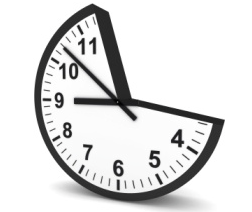
by theEmother | Jun 29, 2007 | build a Mother of a Business, entrepreneur trends (past & present!), entrepreneurial mothers, single parent l single mother, women in business case studies

Stephen Lunn reports: WOMEN who return to work part-time after having children have more difficulty juggling career and family than mothers in full-time jobs.
“It is a double whammy for part-time working women – their jobs aren’t the best career option and more is expected of them on the home front,” said Barbara Pocock, head of the Centre for Work + Life at the University of South Australia.
Professor Pocock conducted in March the first national survey of work-life outcomes, called Work, Life and Time, polling 1435 male and female Australians.
The results, to be released yesterday, “confirm that long work hours have a negative effect both on the individual in terms of health and in the broader context of friendships and community involvement”.
No surprise in any of this really. Entrepreneurial Mothers have known for a long time that “part-time” does not address the issues that it is sort out to do. Which is why many of us set up the way we want to work, and usually that means doing our own thing. Whilst it may add more pressure initially, that pressure can still be controlled as it is you that is driving it… unless of course you have an “overnight success” and control is lost, but that doesn’t really happen; does it?

by theEmother | Jun 20, 2007 | business ideas & thinking, BUY a Business, entrepreneur trends (past & present!), Finish Unfinished Business, so you think you're in business, start with the end in mind, the business model

This month, highlight the (STILL) MADE HERE trend: the power of all products that have a sense of place, coveted by consumers for a variety of reasons: from environmental concerns to shifting perceptions of what constitutes status. Pretty broad, pretty observational. Let’s call it a conversation starter?
Two mega-trends of our time, the greening of consumption and the proliferation of alternative status symbols, hold the promise of vast new riches for real-world entrepreneurs, while wreaking havoc on those that lag behind. Which brings us to the (STILL) MADE HERE trend: the comeback of all things local, all things with a sense of place, and how they’re surfacing in a world dominated by globalization.
“(STILL) MADE HERE” encompasses new and enduring manufacturers and purveyors of the local. In a world that is seemingly ruled by globalization, mass production and ‘cheapest of the cheapest’, a growing number of consumers are seeking out the local, and thereby the authentic, the storied, the eco-friendly and the obscure.”
In this briefing, we’ll focus on three big drivers behind this trend — social responsibility, status and support. There are more, but we’ll save those for a future update. Oh, and don’t worry, we’re not going to wax on for hours and hours about farmers’ markets 😉
Opportunities are in abundance… but can you see them?
Start looking, that’s all you need to do.
Just start…

by theEmother | Jun 8, 2007 | build a Mother of a Business, business ideas & thinking, entrepreneur trends (past & present!), entrepreneurial mothers, inspiring women, so you think you're in business, start with the end in mind, the business model, women in business case studies

It is possible to successfully combine business with humanitarian values, Fran Molloy writes.
JACQUELINE Arias sold her first bag of fair trade coffee a year ago; she’s now projecting that her turnover next financial year will be over $3 million.
And while the rapid growth of her Republica Coffee business is striking, it’s the motivation behind Aria’s astounding success that is most inspiring: she insisted that her businessmodel be ethical.
“My ethics are paramount to me. When I discovered fair trade, I realised that it made absolute sense. I knew Australians,who are so egalitarian, would just fall in love with the concept of fair trade.”
Can you make your business model ethical?…
by theEmother | Jun 5, 2007 | build a Mother of a Business, business ideas & thinking, MEinc, so you think you're in business, the business model
Seth Godin tells us that there are four kinds of marketing situations, and the approach to each is radically different. Yet most of the time, we lump them together as just plain ‘marketing’.
Here’s a quick list of how the four differ:
ONE: You’re a needle, the market is a haystack. Make your needle as sharp as you can, put it in as many haystacks as you can afford. Alternatively, you’ve already decided on your one (the date for the prom or the perfect job). In that case, throw the haystack out and engage in a custom, one-on-one patient effort to tell your story to the person who needs to hear it.
A FEW: Being exceptional matters most. Stand out, don’t fit in. Shun the non-believers.
MOST: Amplify the excitement of the few and make it easy for them to spread the story to the caring majority.
ALL: Compromise. You need to be many things to many people, embraced by the passionate but not offensive to the masses. Sooner or later, the issue for the reluctant part of the buyer community is that it becomes more.
Read the full article here…







